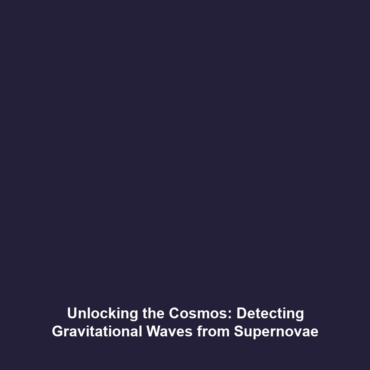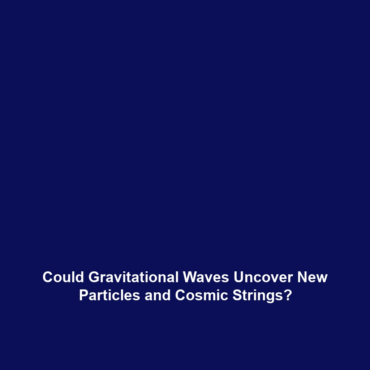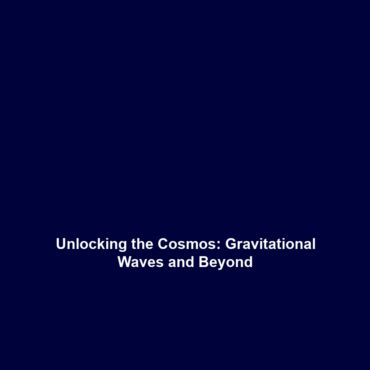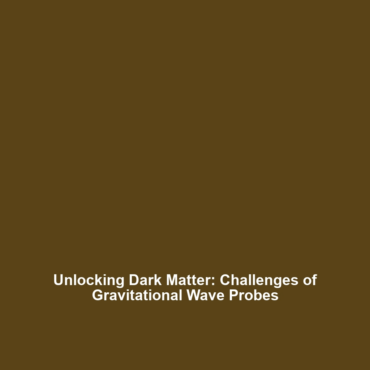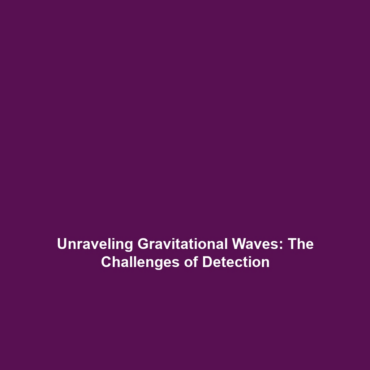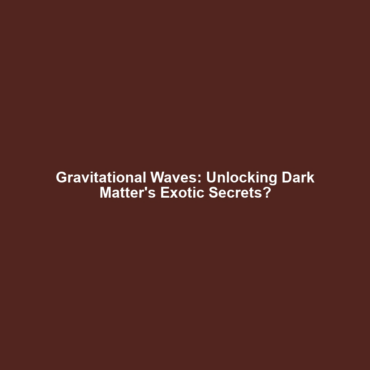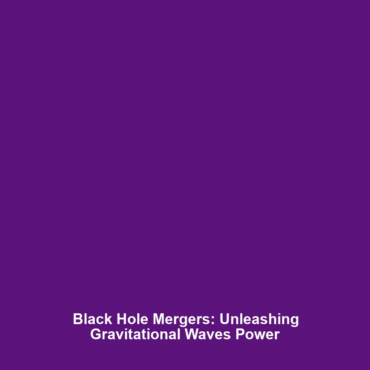Current Efforts to Detect Gravitational Waves from Supernova Explosions
Gravitational waves, ripples in the fabric of spacetime, were first confirmed in 2015 by the LIGO collaboration. Since then, the scientific community has turned its focus to various astronomical events, including supernova explosions, as potential sources of these gravitational waves. Detecting these waves from such cosmic phenomena not only enhances our understanding of the universe but also reveals the fundamental processes governing stellar death. Current efforts to detect gravitational waves from supernova explosions hold significant implications for observational astrophysics and the study of gravitational waves.
Key Concepts in Gravitational Waves Detection
Understanding the current efforts to detect gravitational waves from supernova explosions involves several key concepts:
- Gravitational Wave Astronomy: This newly emerging field aims to observe and analyze gravitational waves using advanced detectors.
- Types of Supernovae: Some types of supernovae, specifically core-collapse supernovae, are believed to be strong gravitational wave sources due to the rapid asymmetrical collapse of massive stars.
- Detection Techniques: Current methodologies include using ground-based observatories like LIGO and Virgo, and future space-based detectors like LISA (Laser Interferometer Space Antenna).
Applications of Gravitational Wave Detection
The act of detecting gravitational waves from supernova explosions brings forth several practical applications, including:
- Astronomical Insights: By analyzing gravitational waves, scientists can gain insights into the properties of supernovae, including their energy outputs and remnants.
- Testing General Relativity: These detections provide a unique opportunity to test Einstein’s theory of general relativity under extreme conditions.
- Cosmological Exploration: Understanding supernovae can contribute to our knowledge of the expansion and evolution of the universe.
Current Challenges in Detection Methods
Despite progress, several challenges persist in the efforts to detect gravitational waves from supernova explosions:
- Sensitivity of Detectors: Current detectors have limitations in sensitivity, which can restrict the detection of weaker waves from distant supernovae.
- Signal-to-Noise Ratio: The inherent noise in detectors often complicates the identification of true gravitational wave signals amidst other astronomical noise.
- Modeling Supernova Events: Accurately modeling the gravitational wave emissions during a supernova is complex and still a developing area of research.
Future Research and Innovations
Looking ahead, researchers are pursuing several innovative approaches to enhance the detection of gravitational waves from supernova explosions:
- Next-Generation Detectors: Initiatives such as the proposed Cosmic Explorer and LISA aim to improve detection capabilities significantly.
- Machine Learning Techniques: Artificial intelligence and machine learning are being applied to enhance signal processing and wave classification.
- International Collaborations: Expanding global partnerships in research will facilitate access to better technologies and observational datasets.
Conclusion
Current efforts to detect gravitational waves from supernova explosions are at the forefront of modern astrophysics, providing new ways to understand the universe’s most dramatic events. As this field advances, the implications for gravitational wave science are profound, paving the way for groundbreaking discoveries. For those interested in learning more about similar topics, visit our pages on gravitational waves and astrophysics methods to explore further.
